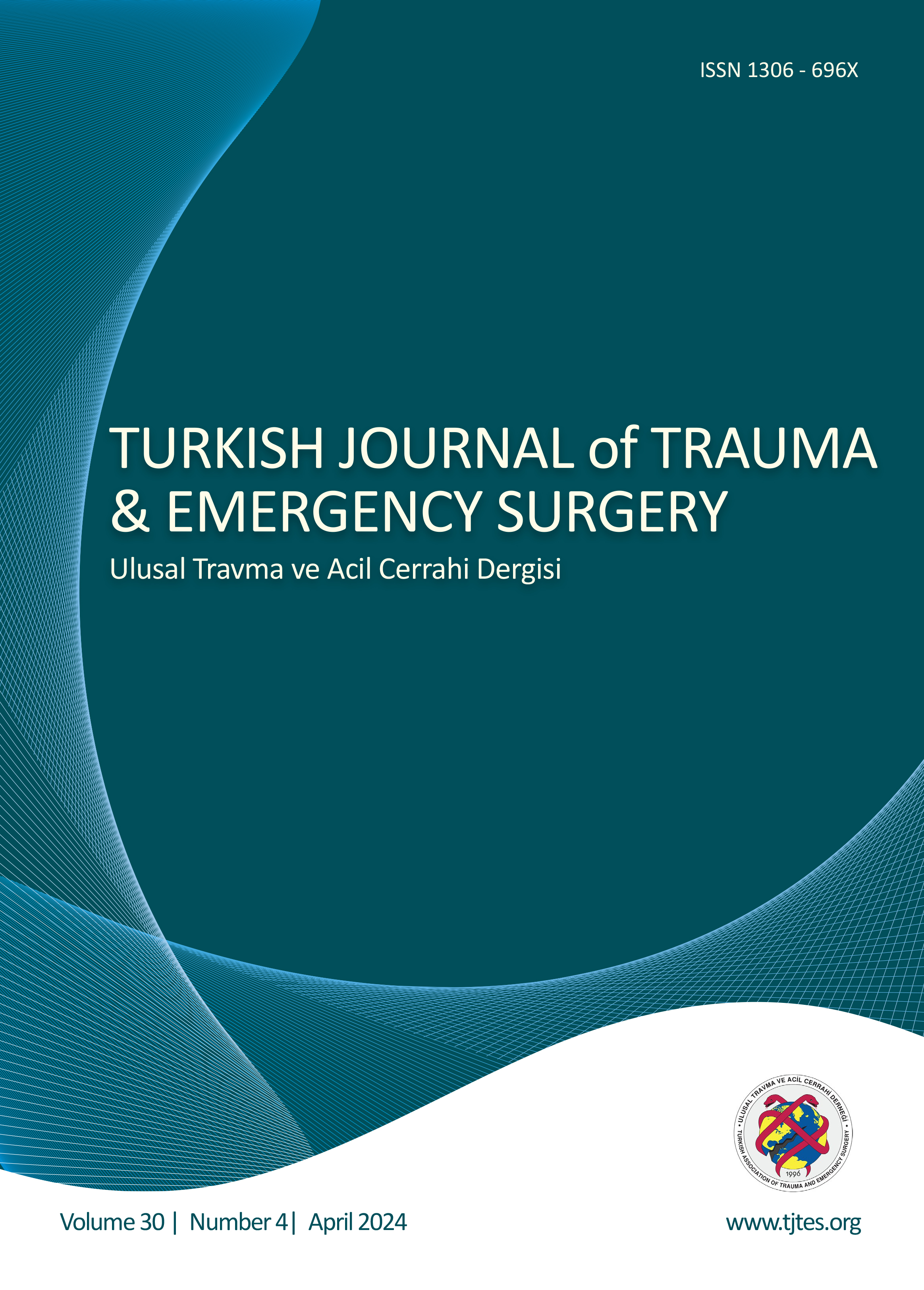Hızlı Arama
Spontan pnömotoraks: 348 olgunun geriye dönük olarak değerlendirilmesi
Recep Demirhan1, Altuğ Koşar2, Hatice Eryiğit2, Hakan Kıral2, Mehmet Yıldırım3, Bülent Arman41Lütfi Kırdar Kartal Eğitim Ve Araştırma Hastanesi, Göğüs Cerrahisi Kliniği- İstanbul2Süreyyapaşa Göğüs Hastalıkları Ve Göğüs Cerrahisi Eğitim Ve Araştırma Hastanesi- İstanbul
3Lütfi Kırdar Kartal Eğitim Ve Araştırma Hastanesi, Genel Cerrahi Kliniği- İstanbul
4Maltepe Üniversitesi Tıp Fakültesi, Göğüs Cerrahisi Ad- İstanbul
AMAÇ
Spontan pnömotorakslı (SP) hastalar iki gruba ayrılarak yaş, cinsiyet, tanı yöntemleri, uygulanan tedavi şekli ve sonuçları açısından geriye dönük olarak değerlendirildi.
GEREÇ VE YÖNTEM
Haziran 1997 ile Mayıs 2005 tarihleri arasında SP nedeniyle tedavi edilen 348 hasta (320 erkek, 28 kadın; ort. yaş 34,5; dağılım 14-80) çalışmaya alındı. Hastaların 274ü (%78,7) primer SPli, 74ü (%21,3) sekonder SPli idi. Sekonder SPli hastalarda tüberküloz en sık sebepti. Hastaların %10una ilk tedavi olarak nazal oksijen ve aspirasyon, %90ına tüp torakostomi uygulandı.
BULGULAR
Nazal oksijen ve aspirasyon ile başarı oranı primer SPli hastalarda %85,7, sekonder SPli hastalarda %66,7 olarak bulundu. Tüp torakostomi ile başarı oranı primer SP ve sekonder SPli hastalarında benzerdi (%88,4 ve %85,7). Tüp torakostominin başarısız olduğu primer SPli 29 (%11,6) hastanın 15ine aksiller torakotomi, 14üne video yardımlı torakoskopik cerrahi (VATS) yapıldı. VATS ile cerrahi uygulanan bir (%7,1) hastada nüks meydana geldi.
SONUÇ
Tüp torakostominin başarı oranı hem primer SPli, hem de sekonder SPli hastalarda yüksektir. Bununla beraber tüp torakostominin başarısız olduğu hastalarda cerrahi yöntemler güvenle ve düşük nüks oranları ile uygulanabilir.
Spontaneous pneumothorax: retrospective analysis of 348 cases
Recep Demirhan1, Altuğ Koşar2, Hatice Eryiğit2, Hakan Kıral2, Mehmet Yıldırım3, Bülent Arman41Lutfi Kirdar Kartal Traning And Research Hospital, Thoracic Surgery Clinic- Istanbul2Sureyyapasa Chest Disease And Chest Surgery Traning And Research Hospital- Istanbul
3Lutfi Kirdar Kartal Traning And Research Hospital, General Surgery Clinic- Istanbul
4Medical Faculty Of Maltepe University, Thoracic Surgery Dept, Istanbul
BACKGROUND
In this study, spontaneous pneumothorax (SP) cases were divided into two groups and retrospectively evaluated according to age, sex, diagnostic methods, treatments, and results.
METHODS
Between June 1997 and May 2005, 348 patients (320 males, 28 females; mean age 34.5; range 14 to 80 years) with SP were enrolled into our study. There were 274 (78.7%) primary SP and 74 (21.3%) secondary SP patients. Tuberculosis was the most common cause in secondary SP patients. Nasal oxygen and aspiration was the first-line therapeutic option in 10% of patients and tube thoracostomy was performed in 90%.
RESULTS
Nasal oxygen and aspiration success ratio was 85.7% in primary SP patients and 66.7% in secondary SP patients. Tube thoracostomy success ratio was nearly the same in patients with primary and secondary SP (88.4% and 85.7%). Of the 29 patients (11.6%) with primary SP with unsuccessful result of tube thoracotomy, 15 underwent axillary thoracotomy and 14 underwent video-assisted thoracoscopic surgery (VATS). One patient among these 14 who underwent VATS (7.1%) had recurrence.
CONCLUSION
Tube thoracostomy success ratio was high in both primary and secondary SP patients. Surgical procedures can be applied safely, with low recurrence rate, when the tube thoracostomy remains unsuccessful.
Makale Dili: Türkçe




